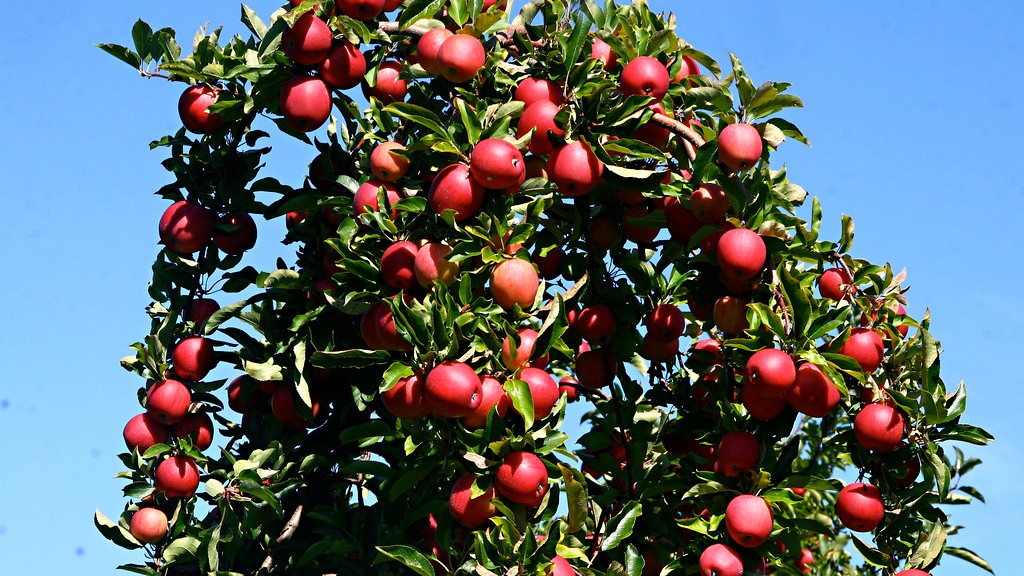Palm trees are a beautiful reminder of the tropical climates found around the world. But to successfully cultivate palm trees in any non-tropical location, the gardener must know what type of soil is best for cultivation. This article will explore the characteristics of the ideal soil needed for healthy palm tree growth.
The ideal soil for a palm tree needs to be well-draining, but not sand-like. A soil composed mostly of sand is too sandy, water drains too quickly, and the roots can’t survive. Clay soils do not drain well, so they can also be too much. Palms prefer soils medium as far as composition, with a mix of sand, silt, and clay.
Amendments like compost help enrich the soil, providing beneficial nutrients to the tree. This can be used to help create a more ideal soil composition of sandy loam, increasing the amount of air and water retention. Compost not only adds valuable organic material, but it also helps the soil hold onto more water and increases its accessibility to the palm’s roots.
pH level is also very crucial for healthy trees. Palm trees typically prefer a slightly acidic soil, with a pH range between 6.0 and 6.5, though some tolerate a pH up to 8.0. Tests can be done to determine the pH and nutrient content of the soil.Adjustments can be made to the soil using fertilizers and soil amendments like sulfur or lime to increase acidity levels.
Planting a palm tree in the wrong type of soil can cause all types of fertility or rooting issues. When selecting a site for a palm tree, gardening experts recommend that it be in a slightly sheltered area. Exposure to too much wind can dry the soil out faster and increases the risk of salt accumulation. Salt build-up can also be an issue in urban and coastal areas due to water contamination.
The right soil, correct amendments and correct pH levels are all essential to ensure proper and healthy growth. In order to provide the healthiest environment possible and get the best results, it is important to learn exactly what type of soil is best for your palm tree.
Mulch
Gardening experts recommend adding mulch around palm trees to retain water and nutrients in the soil. This helps with moisture retention and mediate temperature changes around the tree. Mulch also serves as an insulating layer, preventing the soil from drying out quickly. As an added bonus, a thick layer of mulch also reduces the presence of weeds that could potentially steal valuable nutrients from the palm.
Watering
Young palm trees need regular watering during warmer months. The amount of water is dependent on the amount of rain and temperatures in the area. It is important to watch young palm trees carefully in the dry season.If the soil starts to dry out, give the tree a thorough soaking. Water mature palm trees deeply and infrequently- about once every 1-2 weeks. They are more resilient than young and newly planted palm trees and do not need as much water.
The surest way to know if a palm tree needs more water is to use a moisture meter.Measuring soil moisture will help you figure out if the tree needs water or not. If the levels are too low, it usually indicates that the palm tree needs water.
Fertilization
Fertilization is a helpful way to ensure that a palm tree gets the right kinds of nutrients. Palm trees need regular fertilization – usually twice a year with a balanced, slow-release fertilizer or a liquid fertilizer. Fertilization is especially important if you are cultivating the tree in sandy soil, as it can be difficult for palm trees to access the right nutrients in this type of environment.
When applying a slow-release fertilizer, make sure to spread it in a circular pattern around the tree’s root ball and water it in. If using a liquid fertilizer, make sure to follow the directions on the label accordingly.It is also good practice to check the pH and the potassium levels of the soil to make sure that the tree has proper nutrition.
Pruning
Young palm trees can benefit from occasional light pruning. Prune off old, yellow fronds and brown tips. Young palms may also occasionally produce suckers. These are shoots growing up from the soil. It is important to remove them carefully and selectively. Suckers diverrt energy away from the main trunk and can stunt the tree’s growth.
Once a palm tree is established, it is important to only prune the browned fronds that are blocking the view or are damaged. Do not prune too much as it can weaken the tree. It is also important to make sure to prune the frond properly and not damage the trunk.
Pest Control
Some palm trees can be at risk of pests such as graft mites, scales, mealybugs and plume moths. Monitoring a tree regularly can help to prevent an infestation. If pests or diseases do occur, it is important to take care of them as soon as possible. Palm tree pests can have detrimental effects on the tree if left unchecked. Gardeners should consult with a local nursery or an arborist for the best manner of controlling any pests.
In summary, the right type of soil is an important prerequisite for healthy palm tree growth. The soil should be well-draining and be composed of a mix of sand, silt, and clay. Add amendments like compost to introduce valuable organic material and to increase water retention. It is also important to keep a healthy pH level to ensure that the tree has enough nutrients. Mulch should be added around the tree for extra moisture retention, and the tree should be watered and fertilized regularly. Lastly, monitor the tree for any pests and diseases. With all of these elements together, a palm tree will be sure to thrive in any garden.


